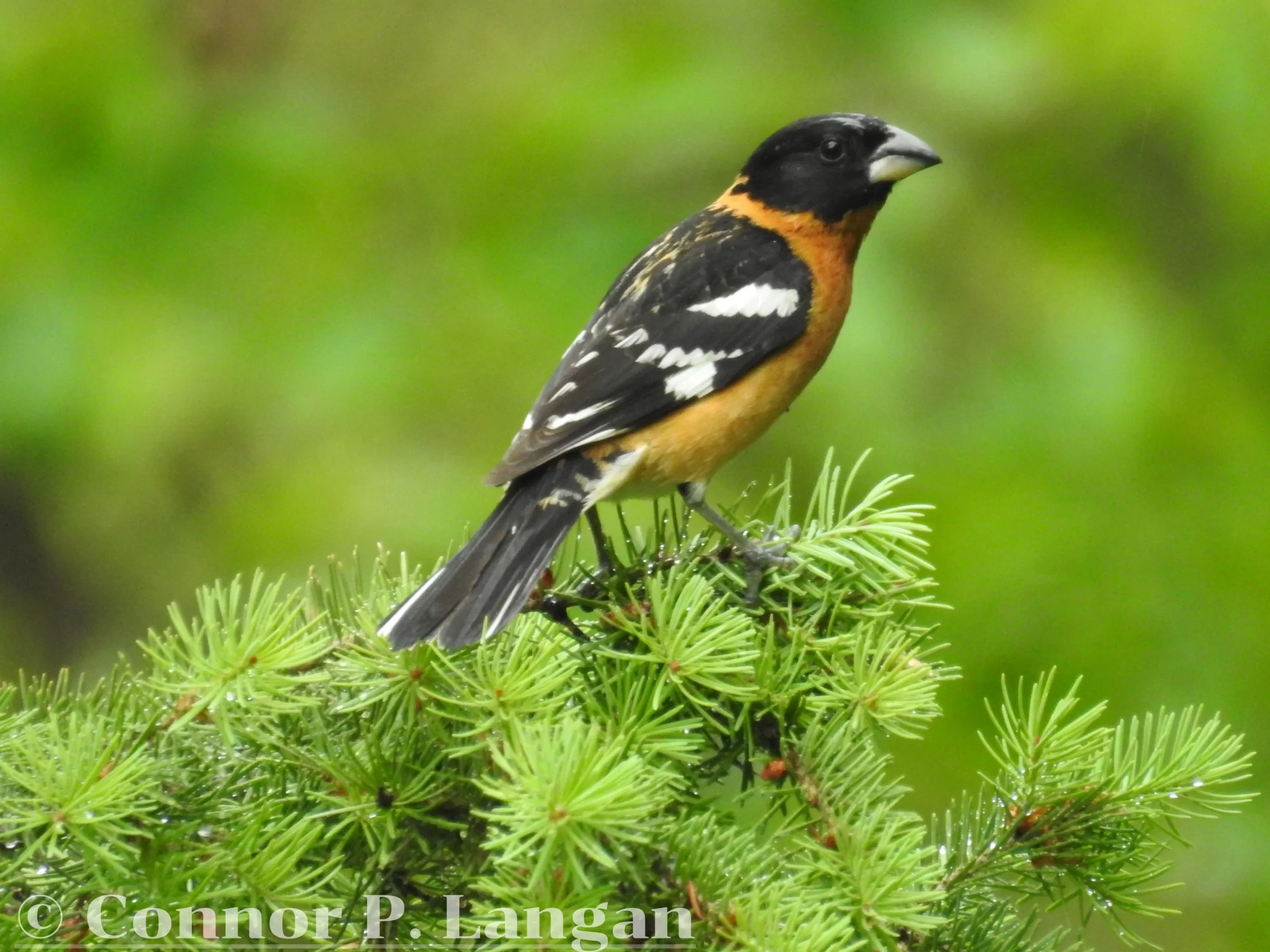Description
Black-headed Grosbeaks are heavyset birds with large beaks and medium-length tails.
These birds measure just over 7 inches in length, while they weigh 1.2 to 1.7 ounces.
Male Black-headed Grosbeaks have the namesake black heads. They also have black wings with white patches and black tails. Male Black-headed Grosbeaks have warm orange underparts and an orange neck.
Female Black-headed Grosbeaks have pale supercilia, gray cheeks, and a dark cap. These birds also have a buffy wash on their breasts and grayish-colored backs. Females have dark streaking on their otherwise pale undersides.
Immature males have a very similar appearance to females.
Behavior
Unlike many songbird species, male and female Black-headed Grosbeaks are known to be persistent singers.
Pairs of Black-headed Grosbeaks aggressively defend their territory from other grosbeaks. Male and female Black-headed Grosbeaks will bombard the threat when a potential predator shows up on their territory.
Diet
The majority of a Black-headed Grosbeak’s diet during the breeding season is comprised of insects. In addition to insects, these birds will consume seeds and fruits.
Black-headed Grosbeaks shift to a diet that is more centered on seeds and fruits during migration and winter. This species is among the only birds that don’t seem to be affected by the toxins within monarch butterflies.
Habitat
Black-headed Grosbeaks require a slew of components to be included in their habitats. These birds seek out areas with plenty of different plant species. Additionally, Black-headed Grosbeaks look for habitats that are close to water.
Therefore, Black-headed Grosbeaks seek forests and forest edges that have mature trees and a diverse understory of plants. Black-headed Grosbeaks survive in such habitats during winter and the breeding season.
In migration, these birds may appear in shelterbelts, parks, cemeteries, and anywhere else with trees.

Range
Black-headed Grosbeaks breed in western North America. These birds are year-round residents in central Mexico. During the breeding season, millions of Black-headed Grosbeaks migrate to the United States and Canada to reproduce.
These birds winter almost exclusively in Mexico.
Breeding
Male Black-headed Grosbeaks sing incessantly to attract the attention of a potential mate. Once a female appears on a male’s territory, the male will court her until they form a pair bond. Black-headed Grosbeaks find new mates annually, and pairs are socially monogamous.
Females are in charge of nest construction – a process that takes a few days to complete. Black-headed Grosbeaks nest in shrubs or trees that are located near water. Nests may be a few feet off the ground to 25 feet high.
Females use plant stems, small branches, and other plant materials to build their nests. The interior of the nest is lined with soft materials like mammal fur and plant fibers. The result is a messy-looking, flimsy assortment of materials that form a nest.
A female Black-headed Grosbeak typically produces a single brood of eggs each year. Clutches contain 2 to 5 eggs, and eggs are incubated for around 2 weeks. After 10 to 14 days in the nest, the young fledge and move on.
Both male and female Black-headed Grosbeaks incubate eggs and feed the young.
Backyard Birding
Black-headed Grosbeaks enjoy visiting bird feeders—especially in the spring. These birds like to eat sunflower seeds, but they will consume any medium to large seed at a feeder. Black-headed Grosbeaks may also drink from hummingbird nectar feeders.
Population Status
Populations of these birds have fared well in the past half-century. There are around 15 million Black-headed Grosbeaks in existence today.
Black-headed Grosbeak Facts
- The oldest males with the most extensive black coloration routinely secure the best breeding territories.
- Black-headed Grosbeaks are known to participate in molt migrations whereby they travel to the American Southwest or Northwest Mexico. Here, they remain for several months while they molt.
- Black-headed Grosbeaks are one of the few predators of monarch butterflies.

